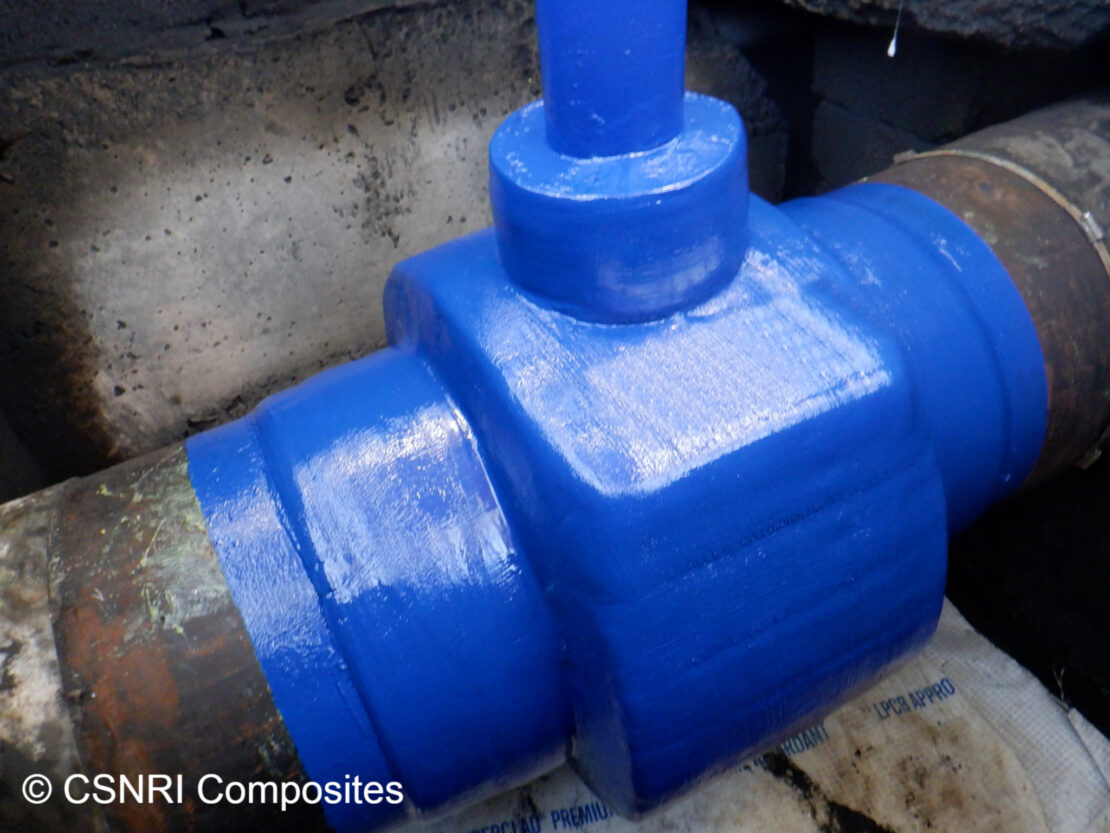Northern UK
Summary
In the northern UK, an independent British energy producer experienced failed flange welds on an 18” fire main, resulting in a leak. A solution was required that would arrest the live leak, prevent further leaks, and reinstate the strength and structural integrity of both defected flange sets. CSNRI engineers recommended a 10-layer application of ThermoWrap® MT to restore the line to its original design capacity and extend its service life.
Benefits
- Extends the life of aging and corroded assets
- Seals leaks
- Restores pipe strength
- Prevents future external corrosion
- Designed for high-temperature, high-pressure environments.
- Eliminates unplanned down time for high-consequence piping
- Easy installation and rapid curing
- No pipe cutting or welding
- Minimal creep
- No VOCs
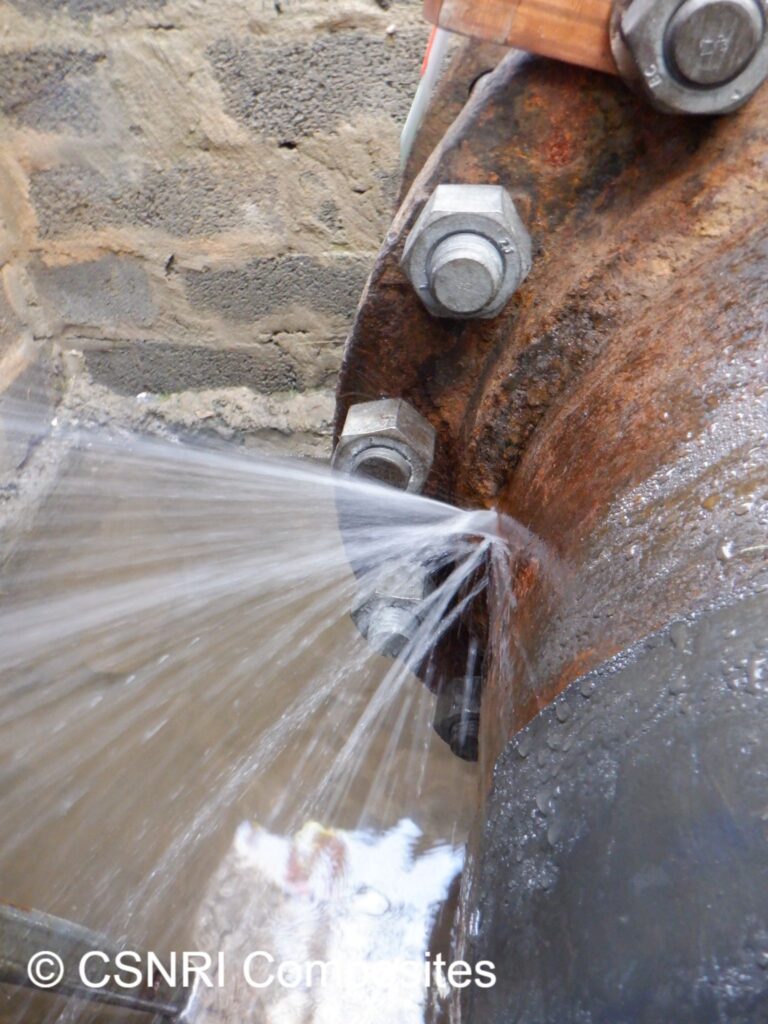
Challenge
The failed flange welds were identified as Type B circumferential slot defects in accordance with ISO24817. Corrosion was established as the cause for the damage to the flange welds. Mitigating factors were determined as damage/erosion of the cement lining, which facilitated corrosion of the flange welds at the IV connection. Continued deterioration was anticipated without an intervening repair. The location of the repair provided limited access to the fire main.
Solution
CSNRI designed a repair incorporating ThermoWrap MT, an engineered field-saturated composite repair system. The custom-engineered system uses a high-modulus fiberglass architecture in conjunction with a patented two-epoxy system. Its thick, non-crimped, glass fiber architecture and nano-tube-enriched resin combine to yield high-strength characteristics. Temperature and chemical resistance, along with the ability to conform to the complex geometry of the failed flange, made ThermoWrap MT an excellent choice for this challenging repair. The repair design extended over the full width of the valve webbing and a minimum of 350 mm back from both flange faces.
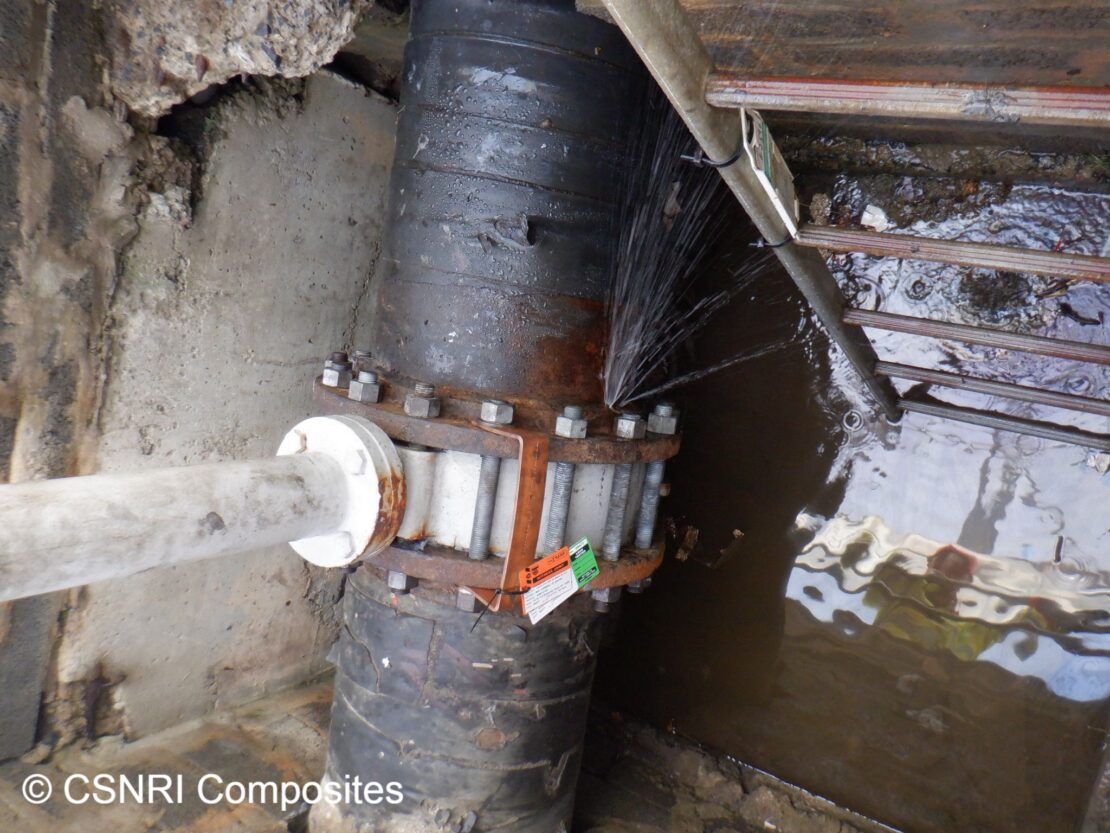
Application
The team was able to complete the repair without full shutdown. It was necessary for CSNRI technicians to install a leak seal system to arrest the live leak prior to the installation of the composite repair. The line was grit-blasted using power tools for a minimum surface profile of 50 microns over the entire repair. The area was then thoroughly cleaned and degreased with isopropanol wipes. An EPN-101 filler was applied to the defect region to ensure a smooth transition over which to apply the repair. EPN-101 was also applied to build out the valve, web and bolting areas for encapsulation.
The repair area was coated with an even layer of SFE-330 averaging 200 microns in thickness. ThermoWrap MT was saturated with SFE-330 resin using the Resinator™ system. Ten layers of ThermoWrap MT were then applied to the repair area. The repair extended from the pipe at both sides, encapsulating the web and valve area, as well as the flange perimeter at both sides.
The ThermoWrap MT application was then encapsulated in six layers of compression film. Heater blankets were applied for post-curing. Following completion of the cure process, the repair was inspected to ensure it reached a shore D hardness of at least 78.
The confined space and tight work area limited the number of crew that could address the repair. These limitations resulted in a repair schedule that required five shifts to complete the process.
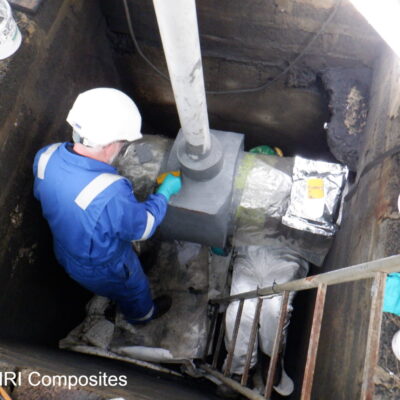
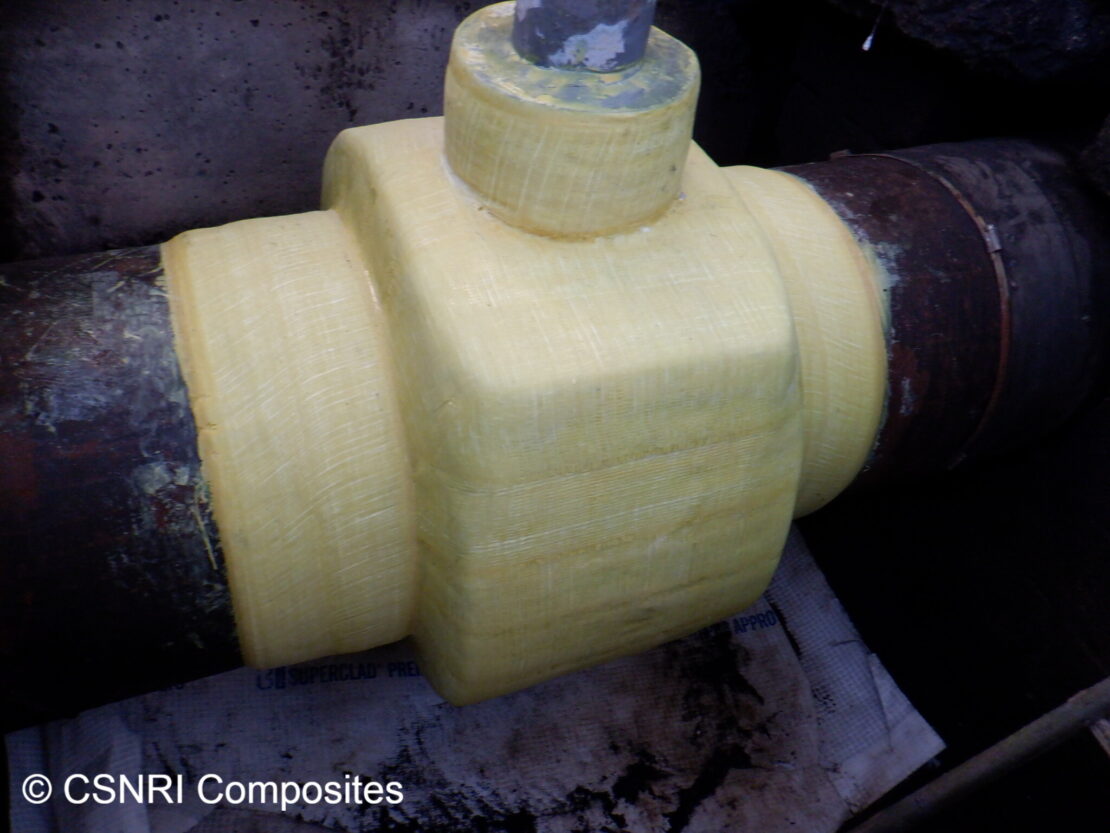
Results
With the application of ThermoWrap MT, the leak was arrested and the defect was repaired, restoring the fire main to full design capacity. The repair was successfully implemented without incident, even with the limitations of confined access.
The versatility of ThermoWrap MT, which was designed as both a pressure-containing repair to seal leaks, as well as a reinforcing repair to restore strength in both the axial and circumferential directions, provides on-site adaptability to help address complex repairs. The repair has not only completely restored the functional integrity of the fire main, but also has added years of service life to the line. The high-performance properties of ThermoWrap MT resulted in a successfully implemented repair.
